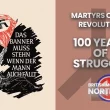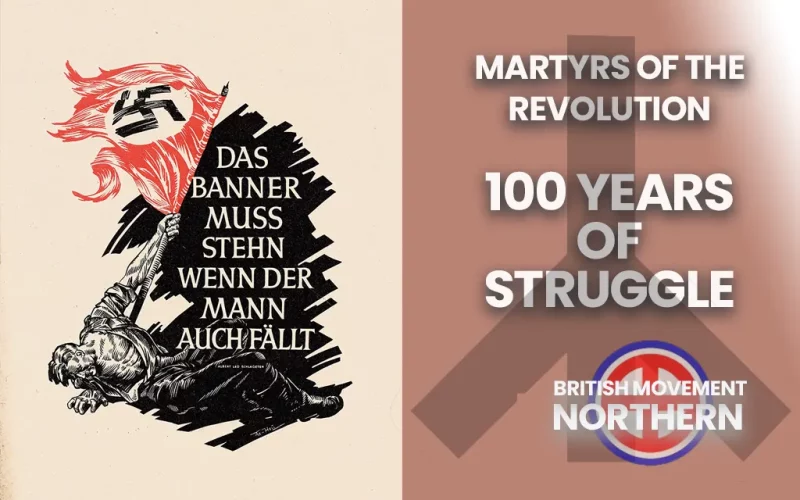BM Northern region has been publishing an occasional feature about the forgotten martyrs of the National Socialist revolution that brought Adolf Hitler to power. The men and women who died so that Germany and Europe could live are mainly forgotten. This series will both honour them and ensure that these heroes of our race live on.
“Only The Forgotten Are Dead”
Otto Streibel / Hermann Schmidt | Katharina Grünewald | Erich Niejahr | Heinrich Limbach | Fritz Hellmann | Udo Curth | Erika Jordan | Max Beulich | Walter Wagnitz | Josef Hilmerich | Rudolf Eck | More to follow……
In 1932, the NSDAP publication “Das Braune Heer” made a powerful reference to the march and bloody sacrifices made at Munich in November 1923. “Before Commander’s Hall, Munich, a hundred men lie in their own blood – some dead.”
Yet, the terrible sacrifice was not in vain; despite all the deaths, the arrests, and the banning of the National Socialist German Workers Party, the movement survived and rose like a phoenix from the blood of November 9th, 1923. With that example before them, the National Socialists made greater sacrifices, fought, bled and built a movement many millions strong.
Other political ideologies would have withered and died when faced by the sledgehammer of Munich on November 9th, but National Socialism not only survived the ordeal but became a worldwide movement that lives on to this day.
“I am old. I know many things that I did not know in my youth, that goes without saying. And yet: I believe that old people only have something to gain from their age if they take their childhood, their early years, seriously. If they can stand by everything they believed, hoped and loved. If he can’t, then he will be pitifully poor. I can tell you that I am very rich”
Emil Klein, who took part in the march to the Feldherrnhalle when he was 17-years old. He died in 2010 aged 104.
We will leave the final words to Emil Klein, the 17-year-old who, with his comrades, took part in the putsch attempt. In 1928, Emil Klein took over the leadership of the Hitler Youth in Bavaria, was appointed head of the Hitler Youth in 1935, and was appointed to the German Reichstag in 1936. When war broke out, he volunteered for the Wehrmacht. He was the liaison officer of the Gebirgsjager Regiment 98.
“I took part in the march to the Feldherrnhalle in Munich on November 9, 1923. I was 17-years old at the time.
“I belonged to the Hitler movement and was an SA man in the 1st company of the Munich SA regiment. We marched from the Burgerbraukeller in the direction of Isarbrucke to Marienplatz, singing German marching songs. Here we turned off to Maximilianstrasse and the Felherrnhalle.
“Unarmed as we were, we arrived there, and suddenly we experienced a fire attack by the Bavarian state police, who fired on the front of the platoon with Adolf Hitler, Ulrich Graf and Erich Ludendorf, behind which my company was marching, without warning.
“The sudden attack caused the marching columns to break up. The men sought cover at the roadside and in the houses.The shots faded, silence fell; what had happened?
“16 men had been shot dead. The Hitler movement had its first dead SA men. They fell for Germany.”
Emil Klein, who passed away on February 22, 2010.
Resources:
Top Image: The Banner Must Stand, Even If The Man Falls – Albert Leo Schlageter. Werner von Axster-Heudtlass, Public domain, via Wikimedia Commons
The British Movement welcomes articles for possible inclusion on this site from members and supporters across the North of England. Please remember that we have to operate within the laws of this country – we will not include any content that is against the current laws of the United Kingdom. News reports should be topical and be relevant to the regions covered by this website.






